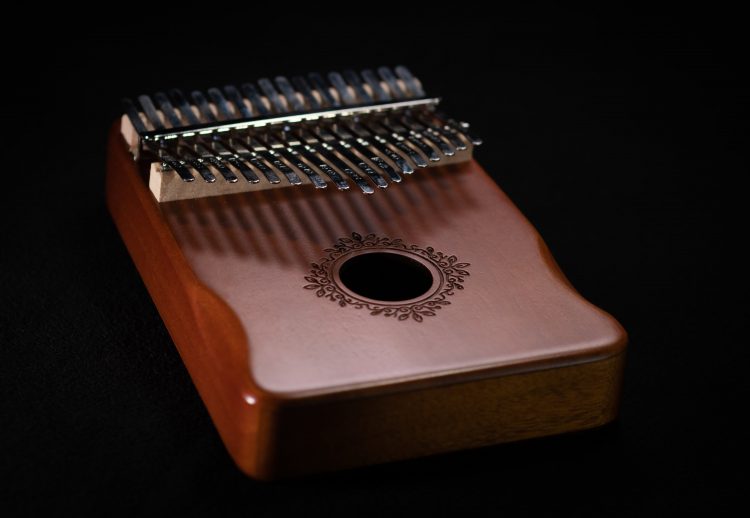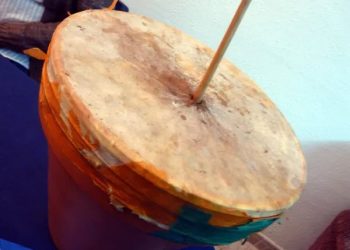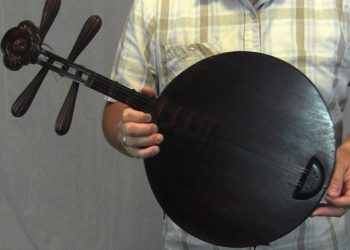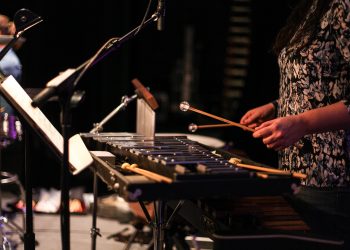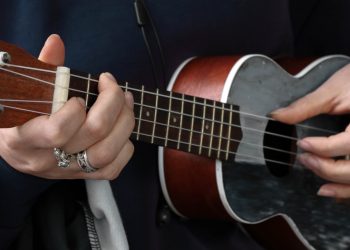Music has the power to bring people together and transport them to a different world. With so many different genres and styles of music, there are countless instruments that are used to create it. From traditional to modern instruments, the world of music is vast and diverse. In this article, we will explore the top 16 musical instruments that start with the letter K.
Starting with the classics, the keyboard is a staple in many music genres, from classical to rock. Moving to the brass family, the kettledrum and kazoo are two unique instruments with distinct sounds. For those looking to add some rhythm to their music, the kalimba and kokiriko offer unique options. The kora and koto, both traditional instruments from Africa and Japan respectively, offer beautiful string sounds that are both mesmerizing and captivating. The list goes on, with the kazakh dombra, kemenche, and kacapi providing a glimpse into different cultural sounds from around the world.
Whether you are an aspiring musician or simply a music enthusiast, exploring the unique sounds of instruments that start with the letter K is a fun and educational experience. From the well-known to the obscure, these instruments each have their own unique character and charm that contribute to the vast world of music.
1. Kadlong
Another type of musical instrument is the kadlong. This traditional stringed instrument comes from Southeast Asia and has been played for centuries. It consists of a long, hollow tube made out of bamboo with four strings stretched across it. The strings are tuned to different notes which can be changed by pressing down on them or pulling up.
The sound produced by the kadlong is unique and often described as hauntingly beautiful. Its low-pitched tones create a mysterious atmosphere that evokes images of ancient times and cultures. Additionally, because all four strings can be manipulated at once, this allows players to produce complex polyphonic sounds that add depth to any piece of music they play.
Kadlongs have become popular in recent years due to their versatility; many musicians use them to accompany other instruments like flutes or violins when playing slow ballads or jazz pieces. They also work well when used alongside electric guitars and drums, creating an interesting contrast between acoustic and electronic sounds. In addition, some modern artists even incorporate elements of hip hop into traditional kadlong tunes!
Overall, the kadlong offers a wide range of sonic possibilities – its distinctive tone makes it an essential part of any musician’s arsenal. Whether you’re looking for something subtle or more upbeat, the kadlong will bring your music to life with its unique timbre and complexity!
2. Kaen
The kaen is another type of traditional musical instrument that has been popular in Southeast Asia for centuries. This bamboo wind instrument produces a very distinct, mellow sound that can be used to create music with a steady rhythm or complex melodies. Although the kaen’s design is simple – consisting of a single tube and four holes at the front – it offers great versatility when playing different styles of music.
Unlike other instruments like the kadlong which uses strings, the kaen relies on air being blown through its mouthpiece to produce sound. The musician must use their breath control and skillful fingers to change notes as they play; this makes it an incredibly difficult but rewarding instrument to learn. Additionally, due to its high pitch range, the kaen adds an energetic feel to any piece of music it’s featured in!
Today, many contemporary musicians are integrating traditional elements from Southeast Asian cultures into their compositions. Kaens are often used alongside more modern instruments such as electric guitars and synthesizers – allowing players to mix old-school sounds with modern production techniques for unique results. Furthermore, some artists have even begun incorporating hip hop beats into traditional pieces featuring the kaen!
Overall, this ancient wind instrument allows performers to blend together different genres while creating something truly special. With its wide array of tones and creative possibilities, there’s no doubt that the kaen will remain a crucial part of any musician’s arsenal for years to come!
3. Kalimba
The kalimba is another traditional instrument that’s gaining popularity in modern music. Derived from the African mbira, this thumb piano-like device consists of metal tines which are attached to a wooden board and held down by magnets. Featuring an easy-to-play setup, it allows users to explore different soundscapes with minimal effort – making it ideal for both beginners and experts alike.
What sets the kalimba apart is its unique tone; thanks to its metallic makeup, each note has a bright, ringing clarity that can’t be found elsewhere. This makes it perfect for musicians wanting to add some extra sparkle into their compositions or those looking to create subtle nuances within ambient tracks. Additionally, due to its portability and ease of use, you can take your playing wherever you go without having to lug around heavy equipment!
Despite its small size however, don’t let the kalimba fool you – there’s plenty of potential here for anyone who puts in the time and effort required to master it. With practice comes greater control over dynamics and articulation; along with being able to layer multiple notes simultaneously similar to what one would do on a guitar or keyboard. And if you want even more range out of your instrument then fret not – there are several models out there with extended octaves as well as other features like built-in effects pedals or looping capabilities!
Ultimately then, whether used as a solo tool or part of larger ensemble groupings, the kalimba offers up vast sonic possibilities that simply can’t be ignored. Its multidimensional qualities make it great for all kinds of musical styles while also providing performers with ample room for experimentation – so why not give it a try today?
4. Kangling
Taking the concept of a thumb piano to the next level, the kangling is another instrument that’s quickly gaining traction. As opposed to its predecessor, this traditional Tibetan horn has an elongated tube made out of either copper or brass and features several fingerholes along its length. By varying your finger placement and airflow, users can produce a range of tones – from mellow drones to powerful blasts – making it perfect for those wanting some extra oomph in their performances!
What makes the kangling so appealing is its versatility; thanks to its size, you can take it anywhere with relative ease while still being able to create complex melodies on-the-go. Additionally, due to its unique sonic properties, you can use it as both a melodic accompaniment or bold lead depending on how much air pressure you exert into it. You also have the option of playing multiple notes at once by using circular breathing techniques which give off a deep reverberating sound like nothing else out there.
The possibilities don’t end there though – if you want even more control over your music then fret not! Several modern models come equipped with removable bells for additional tonal variation as well as adjustable chambers for changing up the pitch levels too. And if you’re looking for something truly special then why not try one of these instruments with built-in microphones? This gives players access to effects like reverb, echo, delay and chorus – all within one device!
No matter what kind of musician you are, incorporating the kangling into your repertoire adds an exciting new element to any performance. So go ahead: unleash your inner maestro and explore all that this incredible instrument has to offer!
5. Kantele
The kantele is a traditional Finnish instrument that’s been around for centuries. Known for its unique sound, this stringed box-like device has become an integral part of the country’s musical identity over the years. Its construction consists of five to 36 strings stretched across a wooden frame and played with the hands or a pick depending on the style you’re going for. There are even some modern models which come equipped with electronic pickups so you can amplify your sounds!
It might be small in size but make no mistake – this little beauty packs quite a punch when it comes to creating music. It produces beautiful harmonious melodies thanks to its intricate tuning system and offers players lots of range and dynamics; from delicate fingerpicking patterns to strong chord progressions, there’s something here for everyone regardless of skill level. Plus, due to its resonating body, any performance on a kantele will fill up whatever space it’s in with warm vibrational tones – making it perfect for intimate gatherings as well as larger events alike.
This type of versatility also extends into other genres such as jazz, classical and pop too; by adding effects like distortion and chorus, users can create all sorts of interesting textures while still maintaining its core qualities. And if that wasn’t enough then just remember: because each model has different sized frames and strings, you can change up your playing style whenever you want!
Whether you’re looking for something new to try or simply want to bring life back into old tunes, incorporating the kantele into your routine is sure to provide plenty of creative possibilities. So give it a go today – who knows what kind of masterpieces await?
6. Kaval
The kaval is an ancient woodwind instrument used in many countries around the world. It has a distinctive, flute-like sound that’s both soothing and vibrant at the same time. Unlike other instruments, its construction requires special care; it’s crafted from dense pieces of hardwood like maple or walnut with six finger holes cut into it – each one creating a different pitch when blown across.
As such, playing the kaval can be quite challenging but rewarding too! With practice, you’ll soon learn how to control your breath while also manipulating the reed to create all sorts of interesting sounds – from fast trills to sustained notes and even double stops. Plus, by covering more than one hole at once, users can produce multiple tones simultaneously – something which isn’t possible on most other instruments.
Though usually associated with folk music traditions, this versatile tool can easily fit into any genre. A great example of this would be jazz fusion where players often use its unique timbre as part of their solos – highlighting complex melodies without overpowering them. And if you’re looking for something a bit more experimental then don’t worry: because of its ability to blend seamlessly into whatever track it features on, some modern producers have been known to incorporate elements from the kaval into their electronic compositions too!
From traditional to contemporary applications, there are so many possibilities available when using a kaval. So why not give it a try today? Who knows what kind of tunes you could come up with?
7. Kazoo
Now transitioning to another wind instrument, the kazoo is a fun and easy-to-play tool that has been around since the late 19th century. It’s essentially a hollow tube with one end covered by a thin membrane – which vibrates when someone hums or sings into it. This vibration creates a buzzing sound that can be used in many different musical styles such as blues, folk, country and even pop!
What makes this instrument so special is its simplicity; anyone can pick up a kazoo and start playing without any prior musical knowledge or practice. Plus, because of its small size and light weight (it usually weighs no more than 6 ounces), it’s great for jamming on the go – whether you’re at home, work or traveling abroad. Additionally, due to its affordability (they often cost less than $5!), it’s perfect for kids who want to explore music but don’t have much money to invest in expensive instruments.
Another thing worth mentioning about the kazoo is how versatile it is; not only does it sound great solo but it also blends well with other instruments too. For example, if you pair it with an acoustic guitar then you’ll create an interesting mix of sounds that range from melodic solos to playful riffs – something that isn’t possible with most other tools out there!
So why not give the kazoo a try? In just a few minutes you could be creating all sorts of jubilant tunes – guaranteed to put smiles on people’s faces wherever you play them!
8. Kettle Drum
A big step up from the kazoo is the kettle drum, a percussion instrument that has been around for centuries. Also known as tympani or timpani, these drums are typically made from copper and range in size from 12 to 36 inches in diameter. Unlike traditional drums which have skins stretched across them, kettle drums feature heads (or “bowls”) filled with water – thus producing deeper, more resonant sounds when struck.
These days you’ll see kettle drums being used in everything from classical music to movie scores; however they weren’t always so popular! The earliest references of these instruments date back to ancient Greece where they were often used during religious rituals and ceremonies. Over time their popularity grew until eventually they started appearing on stage alongside other orchestral pieces like cellos and violins.
Though it may look intimidating at first glance, playing the kettle drum isn’t too tricky – especially if you know some basic technique. Sticks can be used to hit different parts of the bowl depending on what sound you want to make; there’s also mallets available for those who prefer softer tones. And don’t forget about dampening effects either! By placing a cloth beneath your hands you can reduce any unwanted vibrations and create unique sounds not possible with regular drums.
No matter how experienced you are, this versatile tool is sure to bring excitement and diversity into your next musical performance! So why not give it a go? With just a few simple techniques under your belt, you could soon be jamming out all sorts of creative beats!
9. Keyboard Bass
For those looking to take their rhythm game up a notch, the keyboard bass might be just what you’re after. This instrument has been around since the 1960s and is now widely used in all genres of music, from rock and metal to hip-hop and pop. It’s an incredibly versatile tool that can provide both thundering lows as well as light melodic accompaniments – making it perfect for any musician who wants to expand their repertoire.
What sets the keyboard bass apart from other instruments is its ability to create multiple sounds through one device. With a few simple tweaks of knobs or buttons, you can change the tone of your sound dramatically; some even feature built-in effects such as reverb and delay! Plus, because they don’t need much tuning (unlike acoustic/electric guitars) learning how to play them can be done relatively quickly – meaning you won’t have to wait long before jamming out some funky riffs!
But if you really want to master this instrument then practice makes perfect! With regular use, you’ll start getting a feel for which settings work best with certain styles of music and soon enough you’ll be able to improvise complex melodies without breaking a sweat. Don’t forget about finger placement either – two handed techniques are essential when playing live shows so make sure you get plenty of practice on those too!
So why not give the keyboard bass a try? Its versatility means there’s something here for everyone: whether you’re new to music or already experienced, this is one instrument that will guarantee results every time.
10. Keyed Trumpet
A keyed trumpet is a unique brass instrument that combines the tonal qualities of both a trumpet and clarinet into one. While it has been around since the 17th century, modern versions are incredibly versatile and can be used to create sounds ranging from bright, piercing tones to mellow, bubbling melodies. The fact that this instrument also allows players to switch between different keys with ease makes it perfect for those looking to explore their musical boundaries!
The keyed trumpet’s design consists of two separate parts: the bell at the bottom which creates the sound, and a series of keys above it which control the pitch. This means you can adjust your music quickly without having to relearn any notes – making it ideal for beginners or anyone who wants to expand their repertoire in an efficient way. Additionally, each key also contains three holes so that multiple layers of sound can be created simultaneously – allowing even experienced musicians plenty of opportunity for experimentation!
Though playing a keyed trumpet takes some practice (especially when using two hands), once you get comfortable with its mechanics you’ll soon find yourself creating beautiful pieces effortlessly. Plus, with various new models being released all the time, there’s always something exciting just waiting out there for those willing to take up the challenge. So why not give it a go? With enough dedication, you could soon become a masterful player of this fantastic instrument!
11. Kissar
Moving away from the khena, let’s take a look at another traditional wind instrument – the kissar. Like its predecessor, this instrument is made of bamboo and has two pipes connected to each other via a wooden bridge. The difference lies in the number of holes: the kissar has five on each side, allowing for even more complex melodies than before!
This makes it an ideal choice for experienced musicians looking to add some extra flair to their performances; however, beginners can still enjoy playing the kissar too. Thanks to its increased range of notes, there are plenty of opportunities to explore different styles and create something truly unique with every performance. Plus, just like with the khena, there are lots of tutorials available online so you can get started right away!
The kissar isn’t just about making music though; it also offers insights into Indian culture. While learning how to play traditional songs on such an ancient instrument may seem daunting at first, doing so could open up new perspectives on your heritage as well as provide a deeper understanding of where these timeless tunes originated from.
So whether you’re hoping to impress audiences or simply reconnect with your roots through song, picking up the kissar might be exactly what you need!
12. KŎMungo
For those looking for a more complex sound, the kŏmungo might be the perfect choice. This traditional string instrument is made with six gut strings stretched across wooden bridges on both sides of its body. Its unique construction allows musicians to play two different melodies at once and create layered harmonies – making it ideal for anyone interested in exploring new musical possibilities!
Unlike other instruments, there are no notes or scales written down specifically for the kŏmungo; instead, players must rely on their own intuition and creativity to come up with original tunes. As such, mastering this instrument can take some time but the rewards are well worth it – especially since you’ll already have an impressive repertoire of songs by the end!
Of course, learning how to use the kŏmungo isn’t just about creating beautiful music; it’s also about understanding Korean culture too. By playing traditional pieces from your heritage, you’ll gain insight into not only what makes them so special but also why they’ve been passed down through generations for centuries.
On top of that, playing folk songs on a timeless instrument like the kŏmungo will give audiences an unforgettable performance every single time. So if you’re ready to embark on a journey full of discovery and delighting sounds, now may be the best time to pick up this captivating tool!
13. Kora
The Kora is a traditional West African stringed instrument, made from the calabash. It has been used in ceremonies and storytelling for centuries. Its distinct sound can be heard throughout much of the continent.
The kora consists of 21 strings stretched over a bridge and attached to two tuning pegs at one end, as well as twelve frets that run along its neck. The strings are plucked with both hands using leather picks called jalis. This allows the player to achieve complex melodies and rhythms with ease.
Koras have an incredible range of tones, from bright highs to deep bass notes. They also produce unique percussive sounds when strummed or slapped on the body of the instrument. Because of this versatility, they are capable of playing both simple folk tunes as well as more intricate improvisations.
This combination of tone and texture makes the kora a popular choice for many types of music, including jazz, blues, reggae, rock, classical, and more. With its timeless design and captivating soundscape, it’s easy to see why this ancient instrument continues to inspire today’s musicians around the world.
14. Koto
The koto is another traditional West African stringed instrument that has been used in ceremonies and storytelling for centuries. Like the Kora, it consists of a soundboard made from calabash with 21 strings stretched over a bridge. However, unlike the Kora, the koto uses wooden tuning pegs and thirteen frets on its neck. The strings are plucked with two bamboo picks called plectra. This allows for more complex melodies than can be achieved with just one pick.
The koto produces an ethereal tone as well as percussive sounds when strummed or slapped on the body of the instrument. Its unique combination of tones has made it popular among many different genres of music including folk, jazz, blues, reggae, rock, classical and more. It’s also sometimes used to create ambient backing tracks in film scores or add texture to electronic music.
In addition to its versatility in terms of sound and genre, what really distinguishes the koto is its ability to evoke emotion through melody and rhythm. When played with skillful technique by experienced players, this ancient instrument can transport listeners into a magical world that transcends time and space.
To experience the full beauty of this enchanting instrument requires dedication; but those who take up the challenge will find themselves rewarded with captivating performances that have impacted generations since its creation.
15. Kubing
The kubing is a bamboo mouth harp that has been used in the Philippines for centuries. It’s small and portable, making it easy to take with you wherever you go. The instrument consists of four pieces: two narrow strips of bamboo which serve as the frame, and two thin metal reeds which vibrate when plucked. To play the kubing, one holds it between their teeth while gently brushing or tapping its reeds with their fingers – producing a unique sound unlike any other musical instrument.
Like the koziol, this traditional folk music tool can add depth and texture to existing tracks; however, it offers a completely different sonic landscape due to its bright yet mellow tones. Whether used on its own or mixed into an arrangement, it’ll bring your song to life like no other element could! Plus, its distinctive aesthetic will draw listeners in from all around – so don’t be surprised if people start stopping by just to hear what you’re playing!
Another great thing about the kubing is that anyone can learn how to use it regardless of age or skill level. It requires minimal practice time before being able to produce beautiful melodies; meaning even novice players can make stunning music right away! And since each performance is truly original depending on who plays them – everyone’s songs are going to have something special about them.
Whether starting out as a musician or refining your skillset; incorporating the kubing into your repertoire is sure to give your work an exotic flavor not easily replicated elsewhere. So why wait? Get yourself one today and begin creating some unforgettable tunes!
16. Kulintang A Tiniok
Contrasting the kubing, we have the kulintang a tiniok. This traditional musical instrument consists of eight small gongs suspended horizontally on a rack and played with two bamboo sticks. It’s often used in kulintang music – an Indonesian-influenced genre from the Philippines which is characterized by interlocking rhythms and hypnotic melodies.
The tone produced by this unique setup can be quite different to that of other instruments; providing some unexpected harmonic textures for your track. When tapped gently, it produces soft yet reverberating tones perfect for adding depth to any arrangement – while playing harder will create strong percussive sounds ideal for making rhythm sections more dynamic. And if you want something truly special – try combining both approaches together!
Speaking of dynamics, each performance on the kulintang a tiniok has many possibilities because of its flexible design. You can play around with different speeds and intensities to make your piece sound whatever way you like – creating emotive pieces or upbeat bangers depending on what vibe you’re going for. Plus, there are lots of great tutorials out there so beginners won’t find themselves struggling too much either.
So why not give it a go? With just one simple tool, you’ll open up plenty of opportunities to explore new musical ideas and bring them to life in ways only possible through this captivating instrument!
